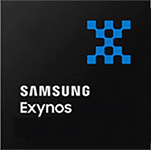
Intel Celeron G5900TE Benchmark, test e specifiche
Ultimo aggiornamento:
Intel Celeron G5900TE è un core processor 2. Può gestire 2 thread contemporaneamente ed è stato introdotto il Q2/2020. Si basa sul 9. Gen della serie Intel Celeron e richiede una scheda madre con il socket LGA 1200.
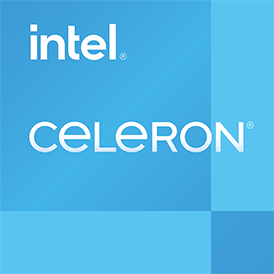
| Cognome: | Intel Celeron G5900TE |
|---|---|
| Famiglia: | Intel Celeron (165) |
| Gruppo CPU: | Intel Celeron G5000 (8) |
| Architettura : | Comet Lake S |
| Segmento: | Desktop / Server |
| Generazione: | 9 |
| Predecessore: | -- |
| Successore: | Intel Celeron G6900TE |
CPU Cores e frequenza di base
I 2 core della CPU del Intel Celeron G5900TE clock con 3,00 GHz. Il numero di core della CPU e la frequenza di clock del processore sono in gran parte responsabili delle prestazioni complessive.
| CPU Cores / Threads: | 2 / 2 |
|---|---|
| Architettura principale: | normal |
| Cores: | 2x |
| Hyperthreading / SMT: | No |
|---|---|
| Overclocking: | No |
| Frequenza: | 3,00 GHz |
| Turbo Frequenza (1 Core ): | -- |
| Turbo Frequenza (2 Cores): | -- |
Grafica interna
Con Intel HD Graphics 610, Intel Celeron G5900TE ha una grafica integrata. Questo ha 12 processori SM, che hanno un totale di 96 texture shader. L'iGPU non solo abilita i giochi, ma accelera anche in modo significativo la riproduzione di video, ad esempio.
| nome GPU: | Intel HD Graphics 610 |
|---|---|
| Frequenza GPU : | 0,35 GHz |
| GPU (Turbo ): | 1,00 GHz |
| Unità di esecuzione: | 12 |
| Shader: | 96 |
| Hardware Raytracing: | No |
| Data di lancio : | Q3/2016 |
| Max. visualizzazioni: | 3 |
|---|---|
| Generation: | 9.5 |
| Direct X: | 12 |
| Tecnologia : | 14 nm |
| Max. GPU Memoria: | 32 GB |
| Frame Generation: | No |
Hardware codec support
I processori con grafica integrata possono elaborare e riprodurre video in modo più rapido ed efficiente. Ciò può avere un effetto positivo sulla durata della batteria dei notebook, ad esempio.
| h265 / HEVC (8 bit): | Decodificare / Codificare |
|---|---|
| h265 / HEVC (10 bit): | Decodificare / Codificare |
| h264: | Decodificare / Codificare |
| VP8: | Decodificare / Codificare |
| VP9: | Decodificare / Codificare |
| AV1: | No |
|---|---|
| AVC: | Decodificare / Codificare |
| VC-1: | Decodificare |
| JPEG: | Decodificare / Codificare |
Memoria & PCIeIntel Celeron G5900TE supporta fino a 128 GB memoria in un massimo di 2 (Dual Channel) canali di memoria. Ciò si traduce in una larghezza di banda di memoria massima di 38,4 GB/s. |
|
| Tipo di memoria : | Banda di memoria: |
|---|---|
| DDR4-2400 | 38,4 GB/s |
| Max. Memoria: | 128 GB |
| Canali di memoria : | 2 (Dual Channel) |
| ECC: | Si |
| PCIe: | 3.0 x 16 |
| PCIe Larghezza di banda: | 15,8 GB/s |
Gestione termicaCon il TDP, il produttore del processore specifica la soluzione di raffreddamento necessaria per il processore. Intel Celeron G5900TE ha un TDP di 35 W. |
|
|---|---|
| TDP (PL1 / PBP): | 35 W |
| TDP (PL2): | -- |
| TDP up: | -- |
| TDP down: | -- |
| Tjunction max.: | 100 °C |
Dettagli tecnici
Intel Celeron G5900TE ha una cache grande 2,00 MB. Il processore è prodotto in %%Manufacturing%%. La produzione moderna aumenta l'efficienza del processore.
| Tecnologia : | 14 nm |
|---|---|
| Design a chip: | Monolitico |
| Presa: | LGA 1200 |
| L2-Cache: | -- |
| L3-Cache: | 2,00 MB |
| AES-NI: | Si |
| Sistemi operativi: | Windows 10, Windows 11, Linux |
| Virtualizzazione: | VT-x, VT-x EPT, VT-d |
|---|---|
| Set di istruzioni (ISA): | x86-64 (64 bit) |
| Estensioni ISA: | SSE4.1, SSE4.2 |
| Data di lancio : | Q2/2020 |
| Prezzo di rilascio: | 53 $ |
| Numero di parte: | -- |
| Documenti: | Scheda tecnica |
Valuta questo processore
Risultati di benchmark

I risultati del benchmark per Intel Celeron G5900TE sono stati attentamente controllati da noi. Pubblichiamo solo risultati di benchmark che sono stati creati da noi o che sono stati inviati da un visitatore e poi controllati da un membro del team. Tutti i risultati sono basati e rispettano le nostre linee guida di benchmark.
Cinebench R20 (Single-Core)
Cinebench R20 è il successore di Cinebench R15 ed è anch'esso basato su Cinema 4D. Cinema 4D è un software usato a livello mondiale per creare forme in 3D. Il test single-core utilizza solo un nucleo elaborativo della CPU. A tal fine, il numero di nuclei elaborativi o la capacità di hyperthreading non sono rilevanti.
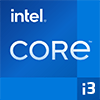
|
Intel Core i3-8100T
4C 4T @ 3,10 GHz |
||
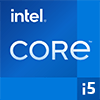
|
Intel Core i5-4690T
4C 4T @ 3,50 GHz |
||

|
Intel Core i5-4590
4C 4T @ 3,70 GHz |
||
|
|
Intel Celeron G5900TE
2C 2T @ 3,00 GHz |
||

|
Intel Core i5-6300HQ
4C 4T @ 3,20 GHz |
||

|
AMD EPYC 7451
24C 48T @ 3,20 GHz |
||

|
AMD Ryzen 3 3250U
2C 4T @ 3,50 GHz |
||
iGPU - Prestazioni FP32 (GFLOPS a precisione singola)
Le prestazioni di calcolo teoriche dell'unità grafica interna del processore con precisione semplice (32 bit) in GFLOPS. GFLOPS indica quanti miliardi di operazioni in virgola mobile che l'iPPU può eseguire al secondo.

|
Intel Celeron N4500
Intel UHD Graphics 16 EUs (Jasper Lake) @ 0,75 GHz |
||

|
Intel Celeron N4505
Intel UHD Graphics 16 EUs (Jasper Lake) @ 0,75 GHz |
||

|
Intel Pentium N6211
Intel UHD Graphics 16 EUs (Elkhart Lake) @ 0,75 GHz |
||
|
|
Intel Celeron G5900TE
Intel HD Graphics 610 @ 1,00 GHz |
||

|
Intel Processor N50
Intel UHD Graphics 13th Gen (16 EU) @ 0,75 GHz |
||

|
Intel Celeron G5905T
Intel HD Graphics 610 @ 1,00 GHz |
||

|
Intel Celeron G5900T
Intel HD Graphics 610 @ 1,00 GHz |
||
Cinebench R15 (Single-Core)
Cinebench R15 è il successore di Cinebench 11.5 ed è anch'esso basato su Cinema 4D. Cinema 4D è un software usato a livello mondiale per creare forme in 3D. Il test single-core utilizza solo un nucleo elaborativo della CPU. A tal fine, il numero di nuclei elaborativi o la capacità di hyperthreading non sono rilevanti.
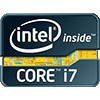
|
Intel Core i7-3930K
6C 12T @ 3,80 GHz |
||
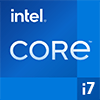
|
Intel Core i7-4558U
2C 4T @ 3,30 GHz |
||

|
Intel Pentium G3420
2C 2T @ 3,20 GHz |
||
|
|
Intel Celeron G5900TE
2C 2T @ 3,00 GHz |
||

|
AMD EPYC 7351
16C 32T @ 2,90 GHz |
||

|
AMD EPYC 7351P
16C 32T @ 2,90 GHz |
||

|
AMD EPYC 7251
8C 16T @ 2,90 GHz |
||
Cinebench R15 (Multi-Core)
Cinebench R15 è il successore di Cinebench 11.5 ed è anch'esso basato su Cinema 4D. Cinema 4D è un software usato a livello mondiale per creare forme in 3D. Il test multi-core coinvolge tutti i nuclei elaborativi della CPU e si avvale del hyperthreading.

|
AMD Phenom II X3 740
3C 3T @ 3,00 GHz |
||

|
AMD Phenom II X3 B75
3C 3T @ 3,00 GHz |
||

|
Intel Core M-5Y71
2C 4T @ 2,20 GHz |
||
|
|
Intel Celeron G5900TE
2C 2T @ 3,00 GHz |
||

|
Intel Core i3-7020U
2C 4T @ 2,30 GHz |
||

|
Intel Pentium 4405U
2C 4T @ 2,10 GHz |
||

|
Intel Core m5-6Y57
2C 4T @ 2,20 GHz |
||
Benchmarks

Cinebench R20 (SC)
656 inserimenti
656 inserimenti

FP32 SP (iGPU)
2.026 inserimenti
2.026 inserimenti

Cinebench R15 (SC)
1.106 inserimenti
1.106 inserimenti

Cinebench R15 (MC)
1.101 inserimenti
1.101 inserimenti
Confronti più popolari
Torna all'indice




